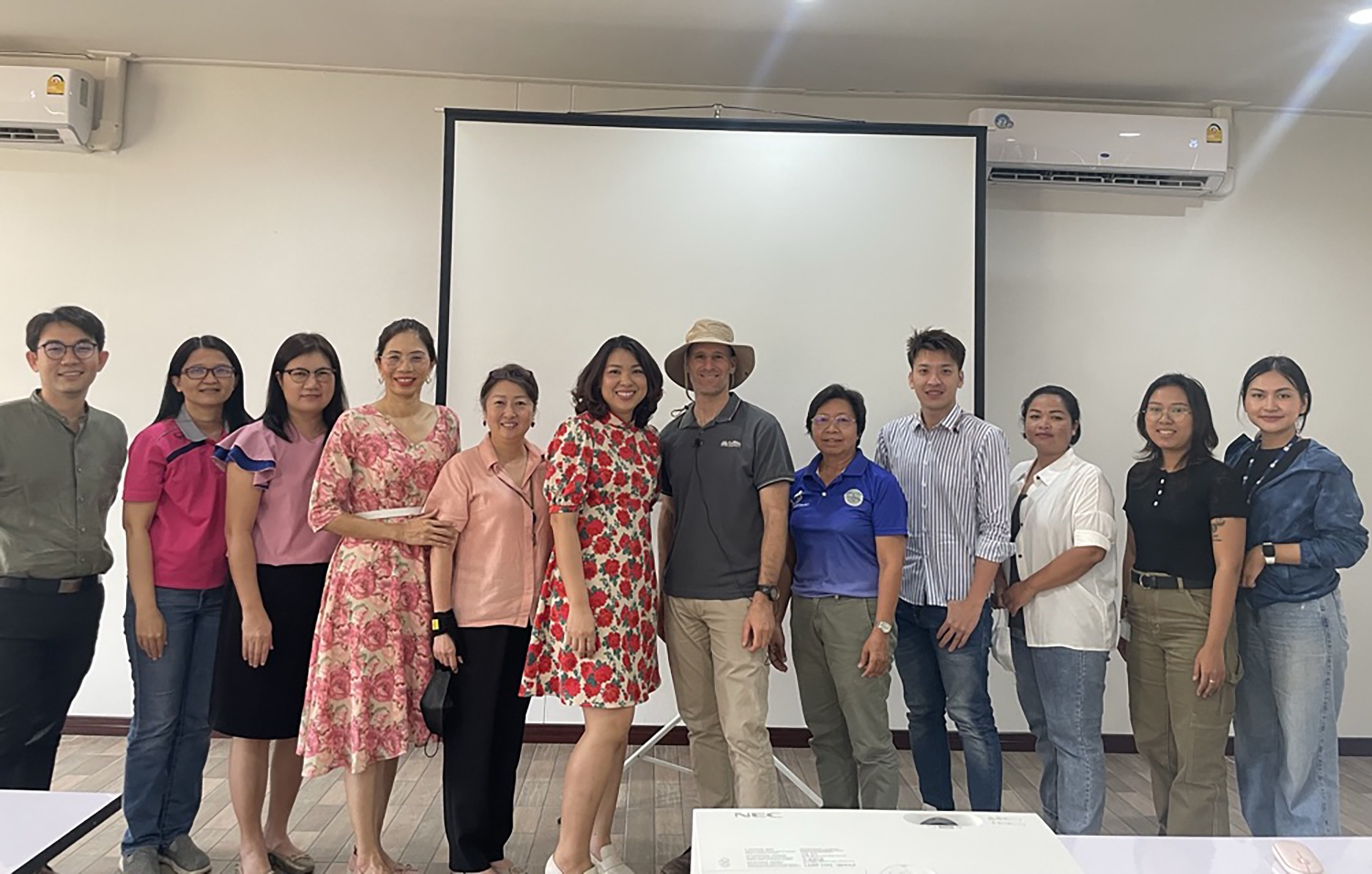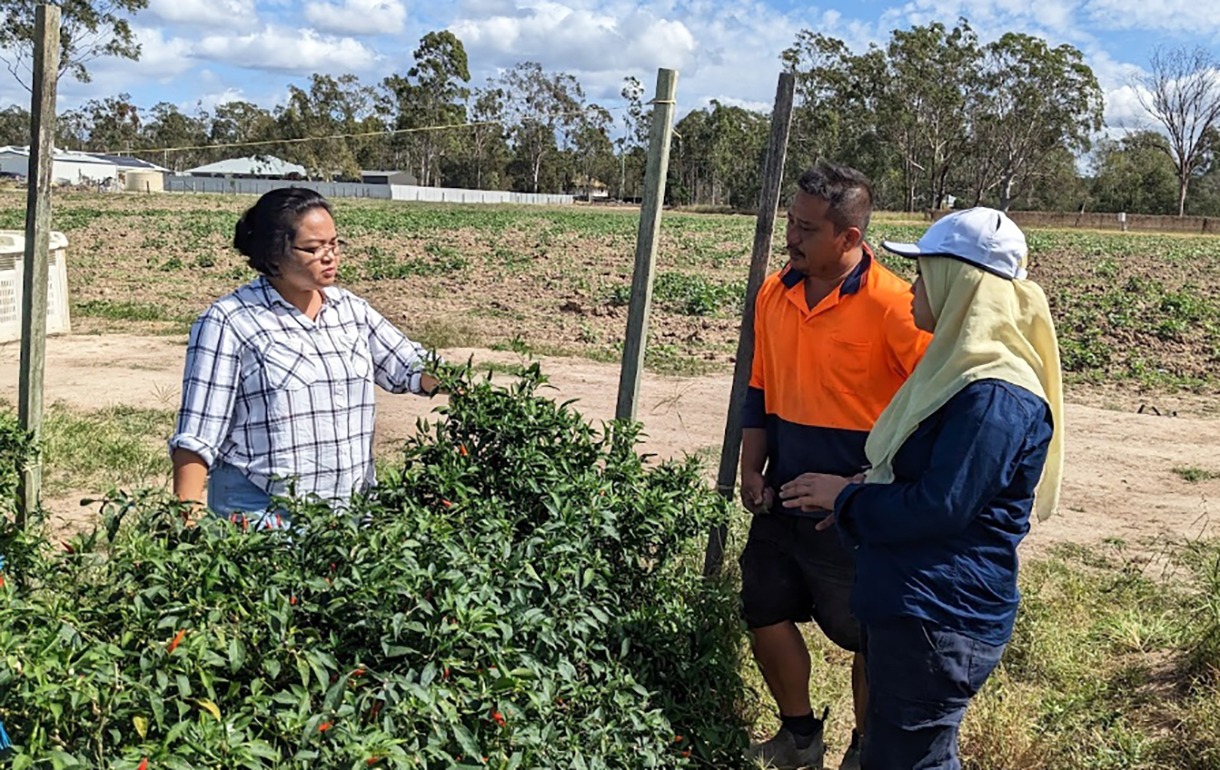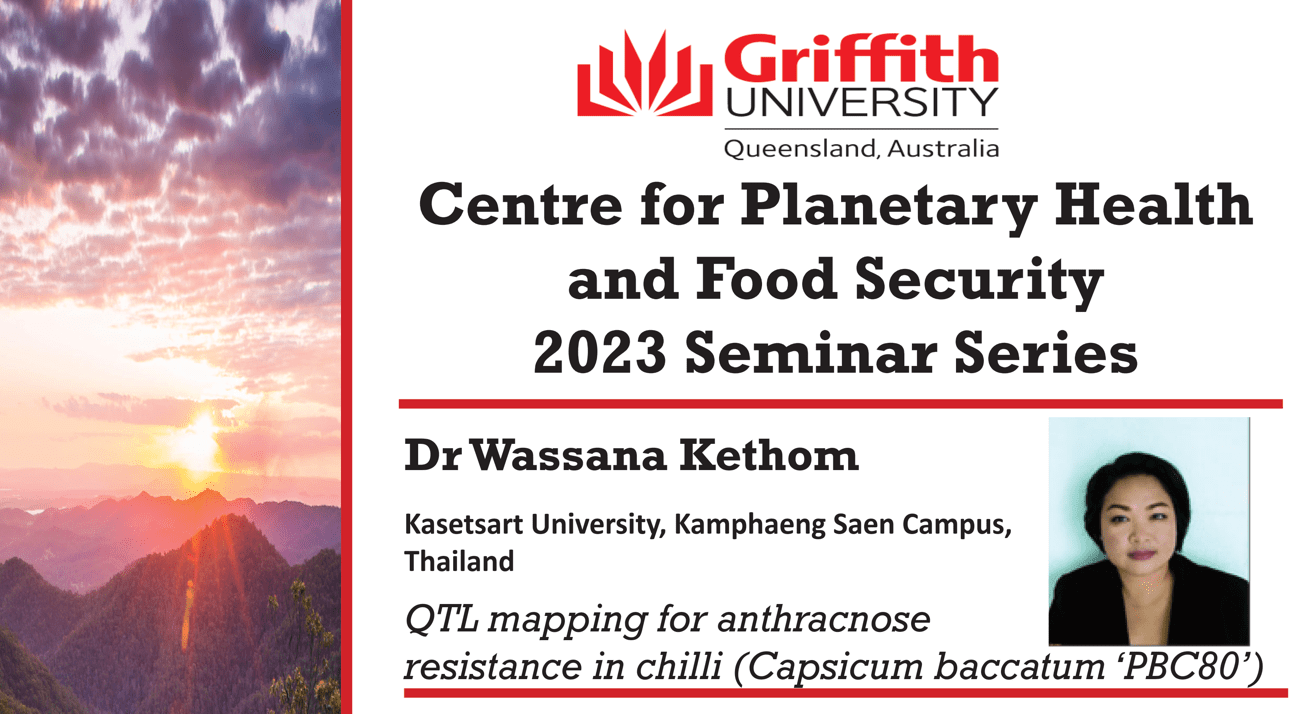

Boosting disease resistance and fruit quality in chillies
December 5, 2023

Through their International Engagement Awards, the Crawford Fund QLD Committee supports targeted training and mentoring of overseas scientists and extension officers by experienced Queensland counterparts working on similar agricultural research challenges. Applications are now open for the 2024 Queensland International Engagement Awards!
In 2022, Dr Ido Bar from the Centre for Planetary Health and Food Security at Griffith University with support from his colleague Professor Rebecca Ford, received funding to train and mentor Dr Wassana Kethom from Kasetsart University (KU) in Thailand to undertake a genome-wide association study for anthracnose resistance and fruit quality traits in Thai chilli germplasm.
The project also aimed to:
- initiate a collaborative research program in chili breeding between Australia and Thailand,
- develop genomic data and skillset towards identification of potential candidate SNPs associated with anthracnose resistance and fruit quality traits in chili,
- publish a review on chili genomics and genomic resources in a peer review journal that will inform the knowledge gap for the larger funding application.
Chilli is an economically important spice crop in Thailand where it is used widely. In 2015, the income for export of chilli pastes and sauce from Thailand was approximately $70 million. However, Thailand’s hot and humid climate is highly conducive to pests and pathogens. Of these diseases, anthracnose is a severe and major damaging disease of chilli fruit.

As a result, the Thai chilli breeding program’s biggest challenge is to breed for high yield, acceptable fruit quality traits and resistance to diseases.
The Thailand Plant Genetic Resource Center Research (TPGRCR) Program at Kasetsart University has registered chili as a major priority crop. Over 2,000 varieties of chili germplasm were evaluated for their fruit quality traits and anthracnose resistance. Along with the morphological traits, genotyping of 823 accessions were successfully documented using DArT sequencing technology and generated 76,314 single nucleotide polymorphism (SNP) markers. The main activity was to analyse the relationship of data to identify candidate SNP markers link to anthracnose resistance and fruit quality traits by performing a genetic diversity analysis and genome-wide association study (GWAS).
GWAS is a powerful tool for identifying molecular markers associated with quantitative traits and resistances to diseases and it was applied for identifying SNP markers linked to traits of interest which are fruit length, fruit width, fruit thickness, capsaicinoid content and anthracnose resistance.
Four SNP markers that significantly associated with chili anthracnose resistance against Colletotrichum truncatum 158ci and Co. scovillei MJ5 were identified. In future research, the associated SNPs may be validated and then implemented for marker-assisted trait selection within chilli breeding programs.
As well as achieving the stated aims of the project, this training and mentoring initiative resulted in research outputs that have been shared among the scientific community and will be published in a peer-review journal and the cultural exchange between Australia and Thailand that will deepen knowledge and foster future collaborations.
While in Australia, Dr Kethom presented a special seminar about the research project titled, “QTL Mapping for anthracnose resistance in Chili (Capsicum baccatum ‘PBC80’) at Griffith University’s Nathan Campus in Brisbane, and online via Teams organised by the Centre for Planetary Health and Food Security.

During her visit in Australia Dr Kethom also visited a local chilli farm owned by Nan Thi Dao and shared her extensive chilli growing knowledge with the grower, addressing production bottlenecks common to Queensland’s chilli farming, including diseases and fruit ripening issues. The visit was organised by Desi Utami and Anthony Young from the University of Queensland.
In Australia, the Bowen and Bundaberg areas of Queensland are the largest chilli growing region with over 1,700 ha of chilli plantations, producing 38,913 tonnes/year. In the humid subtropical climate of Bundaberg, plant pathogenic fungi such as Colletotrchum spp. can easily cause anthracnose disease, as seen in Thailand. Anthracnose has wide host ranges, including mango and papaya. Understanding the resistance mechanism from chilli can be applicable to other economically important crops in QLD, so the improvement of anthracnose resistance in chilli cultivars benefits both countries.
“The whole project was excellent, I am greatly thankful to Dr Chat Kanchana-udomkan (also an adjunct research fellow at Griffith University) and Assoc. Prof. Dr Orarat Mongkolporn, who put a lot of effort to push the successful development of the collaborations between Australia and Thailand and Dr Ido bar who shared his valuable time and bioinformatics knowledge to train me. I hope that the output from this project will benefit the chilli breeding programs in both countries in the very near future,” concluded Dr Kethom.




 0
0